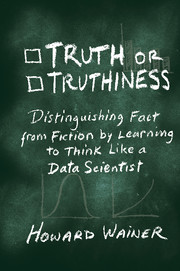Book contents
Section IV - Conclusion: Don't Try Th is at Home
Published online by Cambridge University Press: 05 December 2015
Summary
For most of its history, science shared many characteristics of a sect. It had its own language, strict requirements for membership, and its own closely held secrets. Science can also usefully be thought of as a metaphorical mountain, existing at an altitude far above where ordinary people lived. Those who practiced it shared the common asceticism of the scientific method, while communicating with one another in the too often mysterious language of mathematics.
This description of science has been accurate for at least the 2,500 years since the time of the Pythagoreans but is now in the midst of a revolutionary change. This shift is occurring because it has become apparent to everyone that the methods of science have to be more widely used for humans to understand the world we inhabit.
One of the principal purposes of this book has been to illustrate how often it is that we can use scientific methods without the burden of complex mathematics or arcane methodologies. It is like learning how to ride a bicycle without knowing the equations of motion that describe how to balance upright on just two wheels. Stanford's Sam Savage has an evocative phrase, only slightly inaccurate, that for some tasks we can learn better through the seat of our pants than we can through the seat of our intellect. Obviously, both parts of our anatomy are often useful to master a broad range of situations.
Most of the knotty problems discussed so far were unraveled using little more than three of the essential parts of scientific investigations:
(1) Some carefully gathered data, combined with
(2) Clear thinking and
(3) Graphical displays that permit the results of the first two steps to be made visible.
Of course, many of the problems encountered by scientists are not susceptible to amateurs – coronary bypass surgery, the design of nuclear reactors, and genetic decoding of the Ebola virus are three that come immediately to mind; there are many others. This is not surprising. What is remarkable is how broad the range of problems is that are susceptible to illumination by thoughtful and industrious amateurs.
- Type
- Chapter
- Information
- Truth or TruthinessDistinguishing Fact from Fiction by Learning to Think Like a Data Scientist, pp. 187 - 194Publisher: Cambridge University PressPrint publication year: 2015



